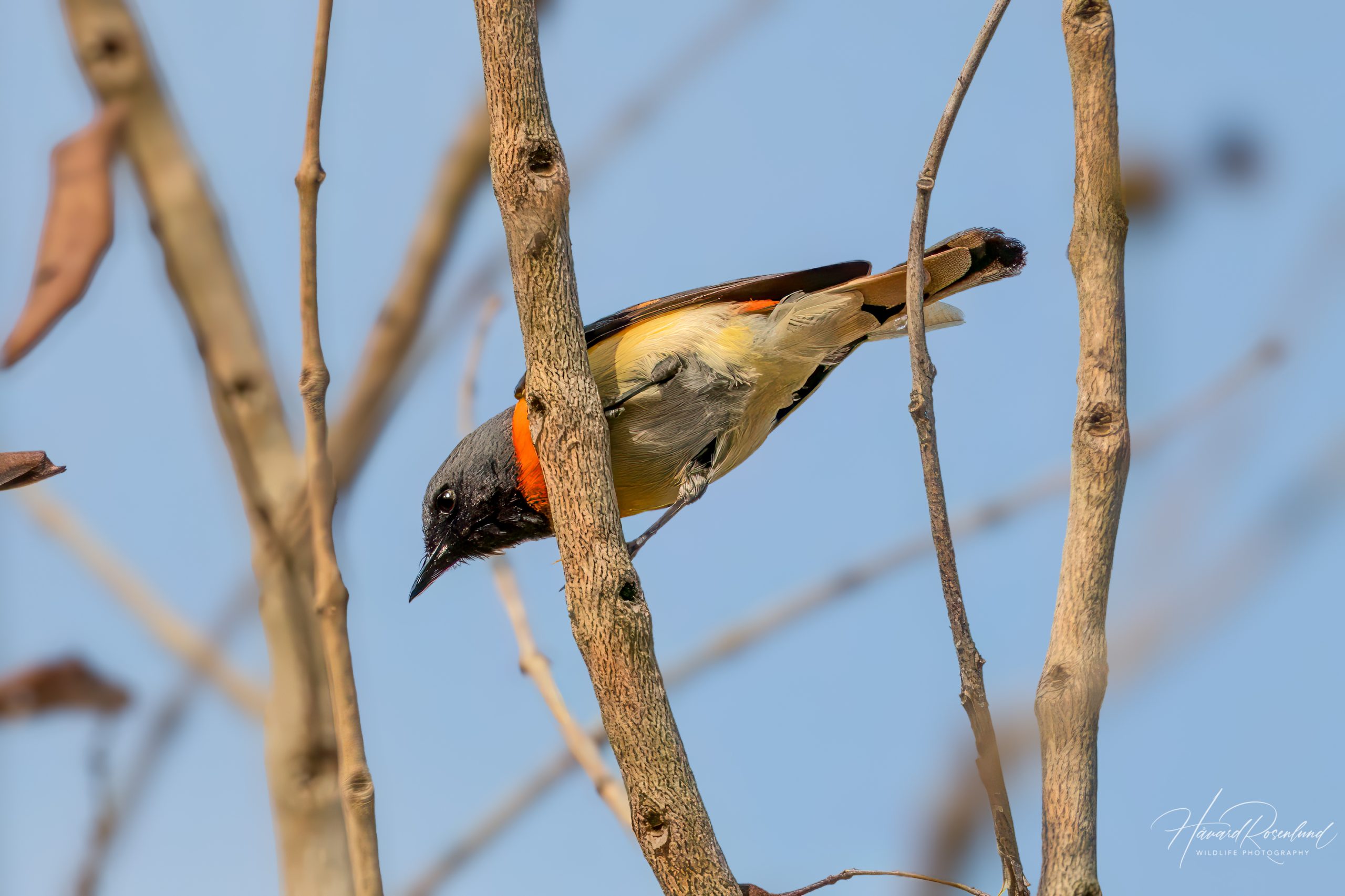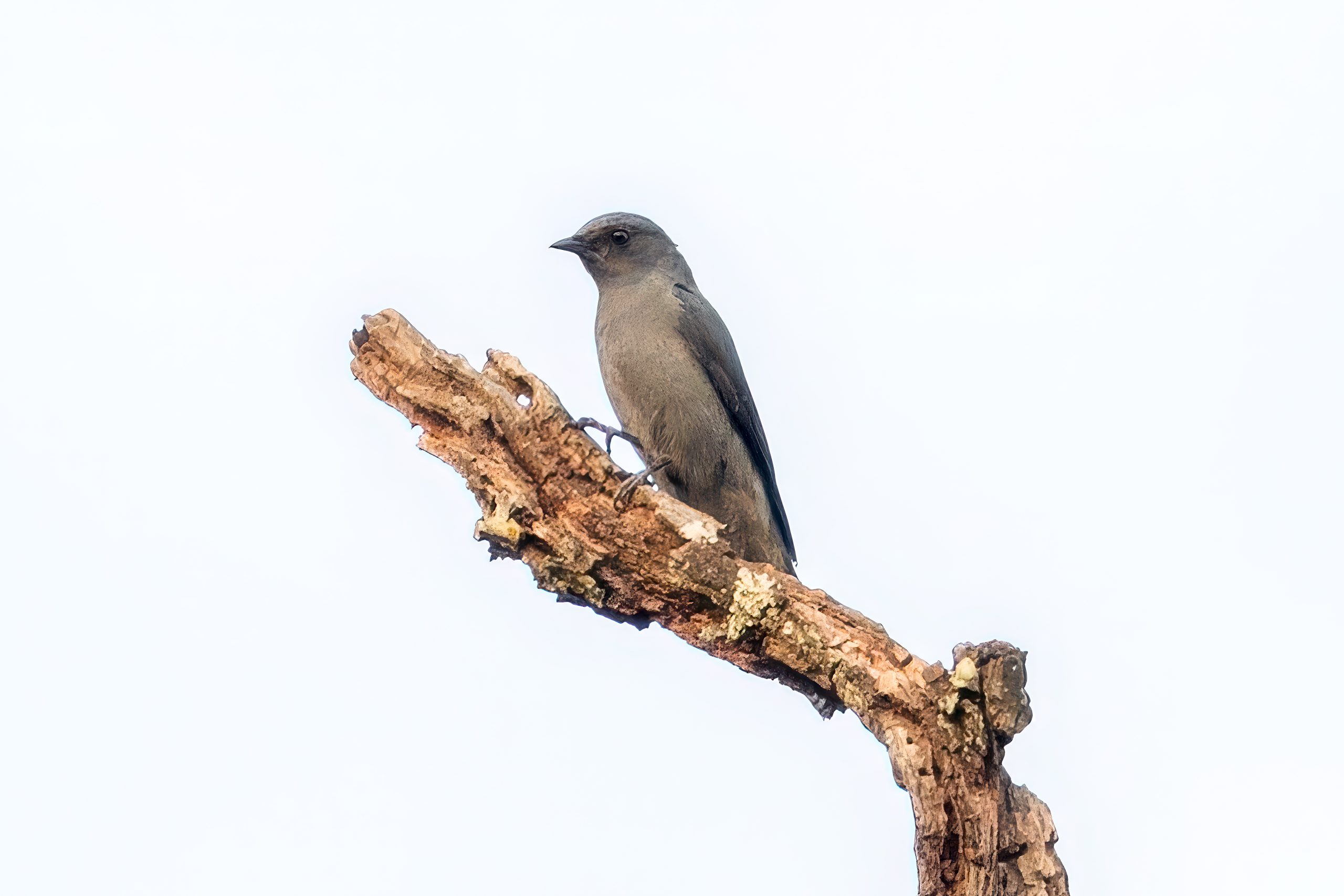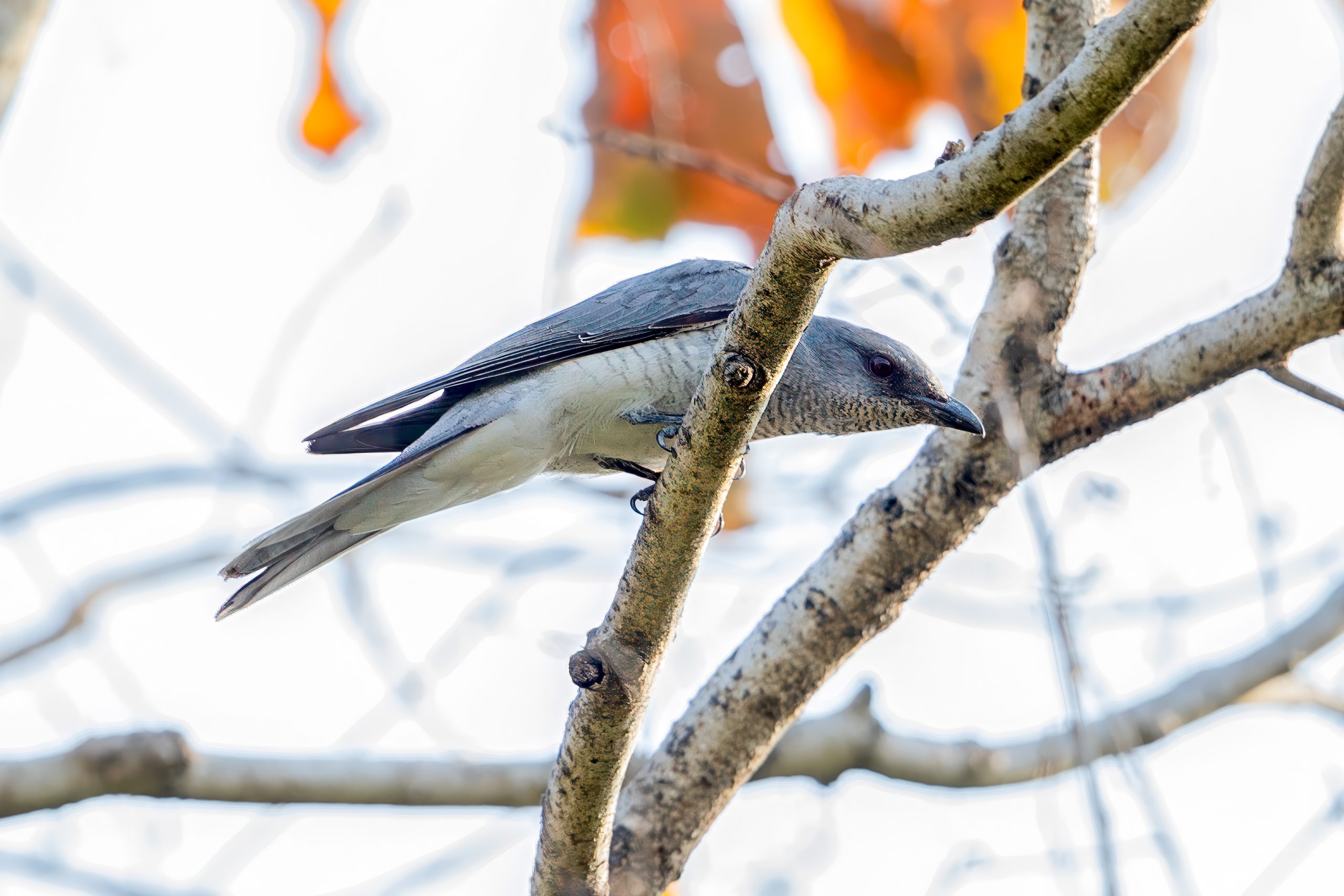Description
The small minivet (Pericrocotus cinnamomeus) is a small, brightly colored passerine bird found across the Indian subcontinent and Southeast Asia. Adult males are striking with their bright orange or reddish underparts and dark upperparts, while females are more subdued with yellow underparts and paler upperparts. The male exhibit a black mask-like stripe through the eye. Small minivets measure about 16 cm (6.3 in) in length, including their relatively long tail. Their calls are high-pitched and musical, often heard in pairs or small groups as they move through the treetops. It can be distinguished from similar species, such as the scarlet minivet (Pericrocotus flammeus), by being smaller, having a more grey than black backside, as well as having a paler lower belly.
Diet & habitat
Small minivets are versatile in their habitat preferences, commonly found in deciduous forests, plantations, gardens, and sometimes even in urban areas. They are primarily insectivorous, feeding on caterpillars, beetles, and other insects. They typically glean insects from foliage, and are often seen flitting actively through the canopy in search of prey. Small minivets are known for their cooperative foraging behavior, often seen in mixed-species flocks. This behavior not only enhances their feeding efficiency but also offers protection against predators.
Nesting
The breeding season of the small minivet varies by region but generally occurs from February to June. These birds build cup-shaped nests high in trees, constructed from twigs, grasses, and spider webs, and often camouflaged with lichen. The female typically lays 2-4 eggs, which are incubated for about 12-14 days. Both parents participate in feeding the chicks, which fledge approximately 12-14 days after hatching. The fledglings remain dependent on their parents for several weeks post-fledging as they learn to forage and fly.
Status
The small minivet is currently listed as least concern on the IUCN Red List. It is not considered threatened, largely due to its wide range and adaptability to various habitats. However, like many bird species, it can be affected by habitat loss due to deforestation and urbanization.







